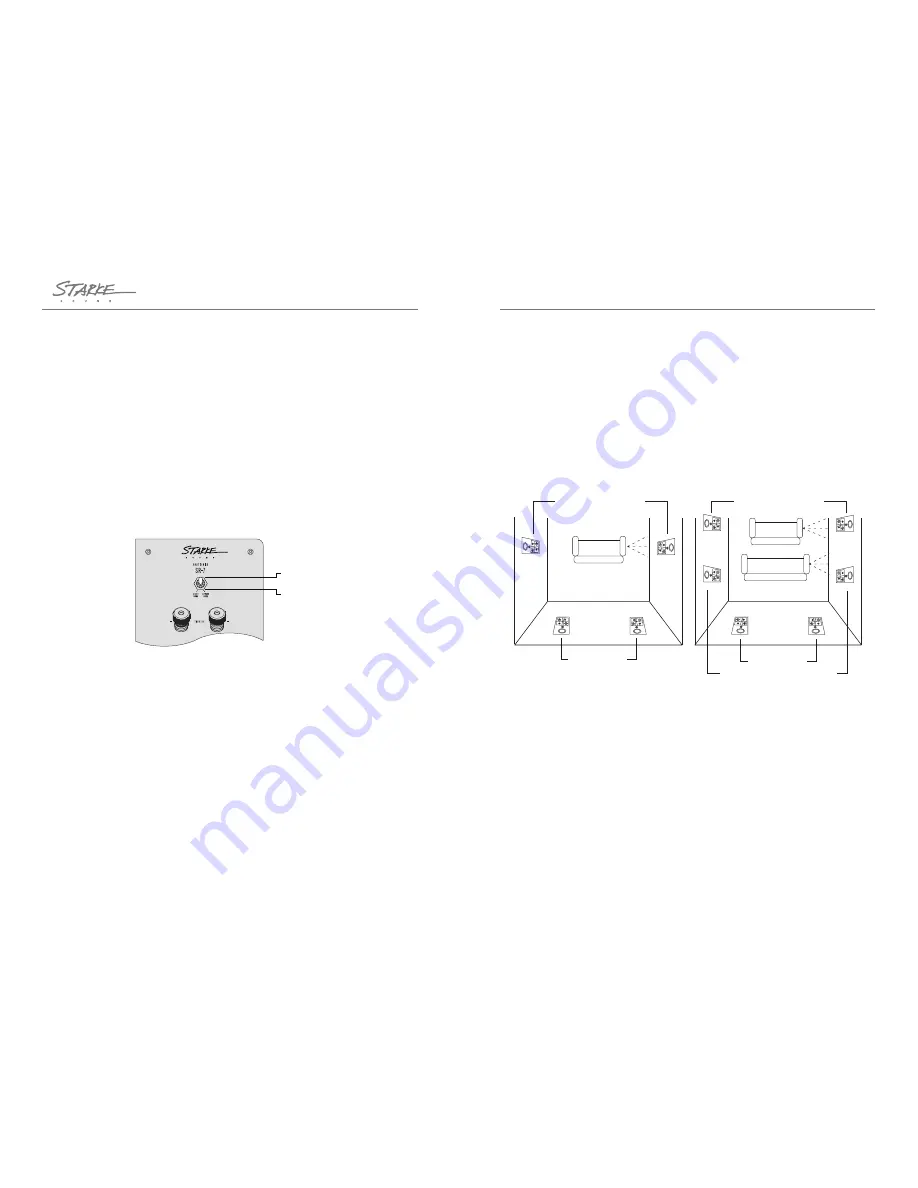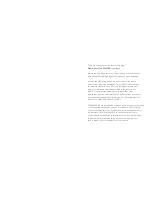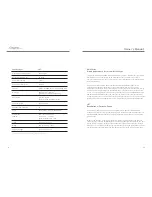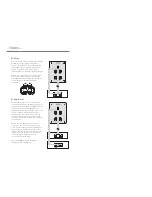
Owner’s Manual
DIRECT MODE
DIFFUSE MODE
Mode selection swith
The SR7 have a Mode selection switch to adjust the output mode from Bipole to
Direct. In most situations, the "Direct Mode" position will produce the best sound.
In some case you may want to expand sound field, but don't want to add more
surround speakers, you can just turn the swith to "Diffuse Mode" in order to give
more even coverage and a more diffuse field.
Diffuse mode also works for the case if your room is narrow so the surround
speakers is too close to you ears.
Note: Don't use diffuse mode when your side walls is unregular. That may cause
unnessary distortion since in diffuse mode we need to use the reflection of
walls.
When you use "Diffuse Mode", Please keep in mind use the speakers like the
picture “A” and “B” (On the next page) to make your system have correct phase
matching.
Keep in mind the phase of your Left channel and Right channel speaker is 180
degree different(opposite).So if you want to use more surround speakers, Keep
in mind to correct the phase matching.
15°
15°
Left Right
Right Left
Right Left
Left Right
Left Right
- +
- +
- +
- +
- +
- +
- +
- +
- +
- +
A
B
15°
15°
15°
15°
Recommended 7.1 and 9.1 speakers placement.
(
Please mount the speaker as shown in the picture for correct phase alignment.
)
Location of Surround Speakers
STARKESOUND has provided the following information for the placement of surround
speakers. Although there are many opinions regarding placement and location of
surround speakers Starke Sound has provided the following recommendations based on
thorough research, academics, and our experience with many installations. Note: The
choice of models used in the illustration below is arbitrary. The information described in
the illustrations can be applied to both the IC,IW and SR series covered in this manual
and in any of the surround locations. However, please keep in mind that the tweeter
should be vertically oriented.
If two surrounds are used in a standard 5.1 configuration (not 7.1 or EX), they are best
mounted directly to the sides of the primary seating location, preferably within ±15° (see
illustration). This placement is the preferred method over back wall mounting for a few
reasons: 1. the placement of the surround speakers are located where the ear's ability to
discriminate left from right is optimum. This produces the maximum sense of
"envelopment" being surrounded by sound, 2. Mounting the rear speakers behind the
listener increases the angle between the front and rear speakers. This results in
reducing the chance that there will be a continuous front-to-rear sound image, lastly, 3.
Since our ability to discriminate the front-to-rear location of a sound source is not very
strong, locating surround speakers to the side of the listener will improve the listening
experience. 7.1 or EX systems that use side and rear speakers together overcome all of
these obstacles and give both maximum envelopment and a more continuous surround
effect.


























